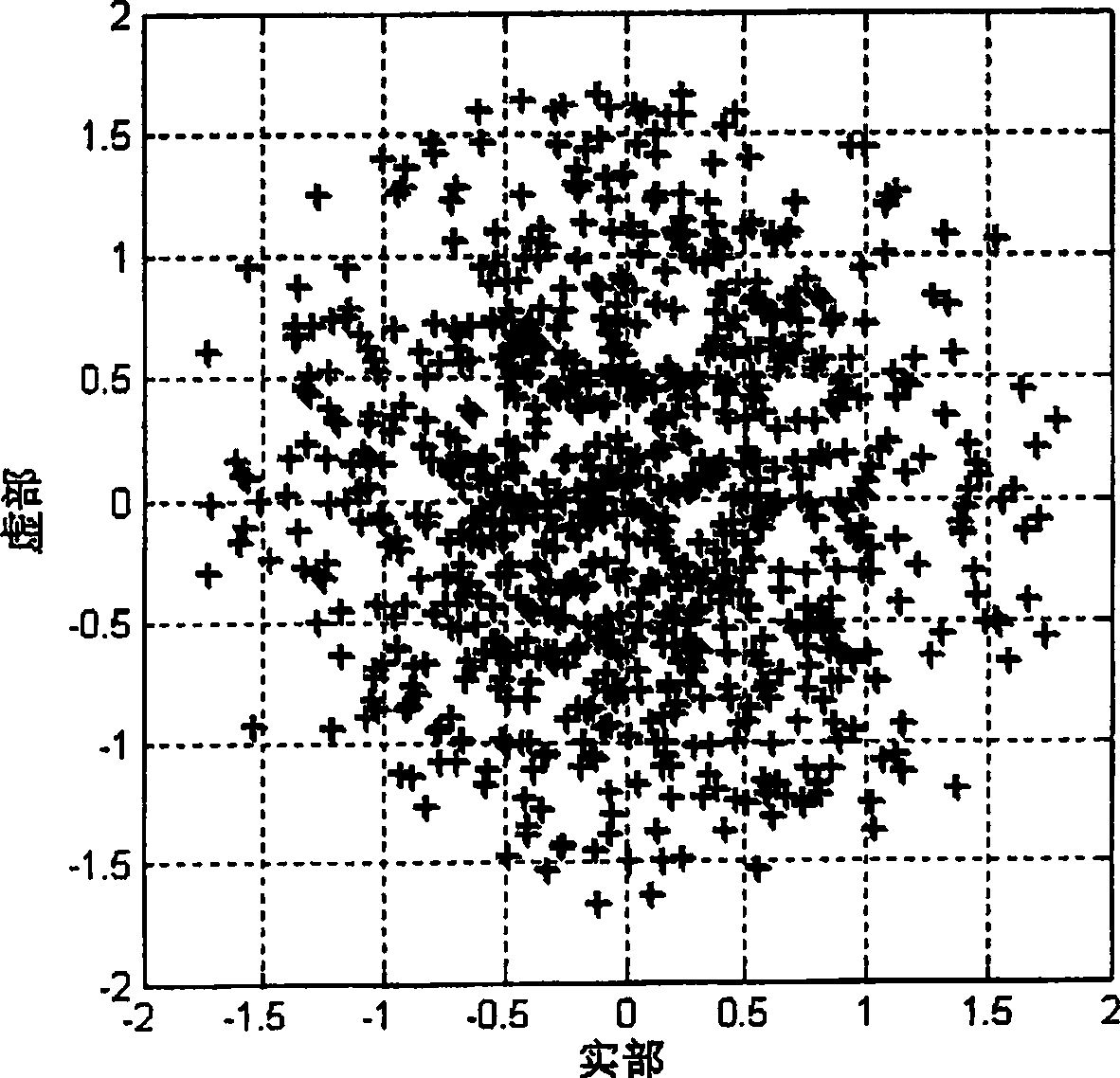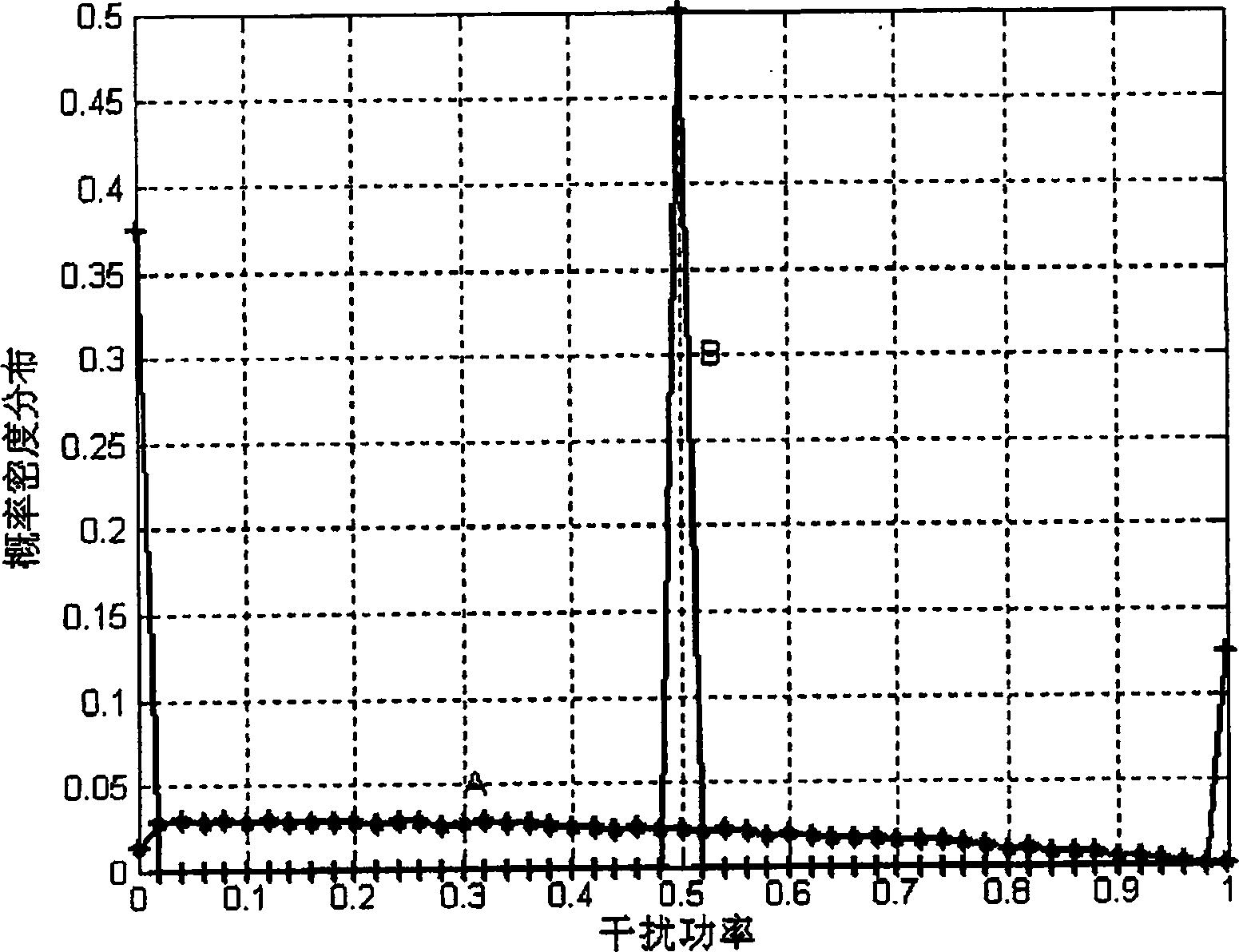Method for transmitting and receiving quasi-orthogonal time space group code, transmitter and receiver, and communication system
A space-time block coding and space-time block coding technology, applied in the field of communication systems, can solve the problems of poor system performance, no use of space-time diversity effect, multi-antenna inter-symbol interference, etc., and achieve the effect of reducing the bit error rate
- Summary
- Abstract
- Description
- Claims
- Application Information
AI Technical Summary
Problems solved by technology
Method used
Image
Examples
Embodiment 1
[0038] In the multi-antenna system used in this embodiment, the transmitting end is a transmitting antenna array including four transmitting antennas, and the receiving end is one receiving antenna. It is assumed that the wireless channel is a quasi-static Rayleigh fading channel, and the receiver can accurately estimate the channel fading information. The signal-to-noise ratio (SNR) is defined as the ratio of the average power of the useful signal to the noise in the signal vector of the receiving antenna. The system adopts 4×1 transmit diversity quaternary phase-shift keying (QPSK) modulation.
[0039] The baseband transmission block diagram of the transmission and reception method of the quasi-orthogonal space-time block code of the present invention is as attached figure 1 Shown: Gaussian random matrix generation module 1 generates a 4×4 complex Gaussian random matrix 2, the elements of the matrix are independent and identically distributed complex field random variables,...
Embodiment 2
[0062] The technical solution of embodiment 2 is basically the same as the embodiment of embodiment 1, and its difference is that the coding mode that described quasi-orthogonal space-time block coding module 17 adopts is Jafarkhani coding: namely
[0063] S J ( s 1 , s 2 , s 3 , s 4 ) = A B - B * A * = s 1 ...
Embodiment 3
[0071] The technical solution of embodiment 3 is basically the same as the implementation of embodiment 1, and its difference is that the encoding method adopted by the quasi-orthogonal space-time block coding module 17 is a modified Jafarkhani coding method: namely
[0072] S JT ( s 1 , s 2 , s 3 , s 4 ) = s 1 s 2 s 3 s 4 ...
PUM
 Login to View More
Login to View More Abstract
Description
Claims
Application Information
 Login to View More
Login to View More - R&D
- Intellectual Property
- Life Sciences
- Materials
- Tech Scout
- Unparalleled Data Quality
- Higher Quality Content
- 60% Fewer Hallucinations
Browse by: Latest US Patents, China's latest patents, Technical Efficacy Thesaurus, Application Domain, Technology Topic, Popular Technical Reports.
© 2025 PatSnap. All rights reserved.Legal|Privacy policy|Modern Slavery Act Transparency Statement|Sitemap|About US| Contact US: help@patsnap.com



